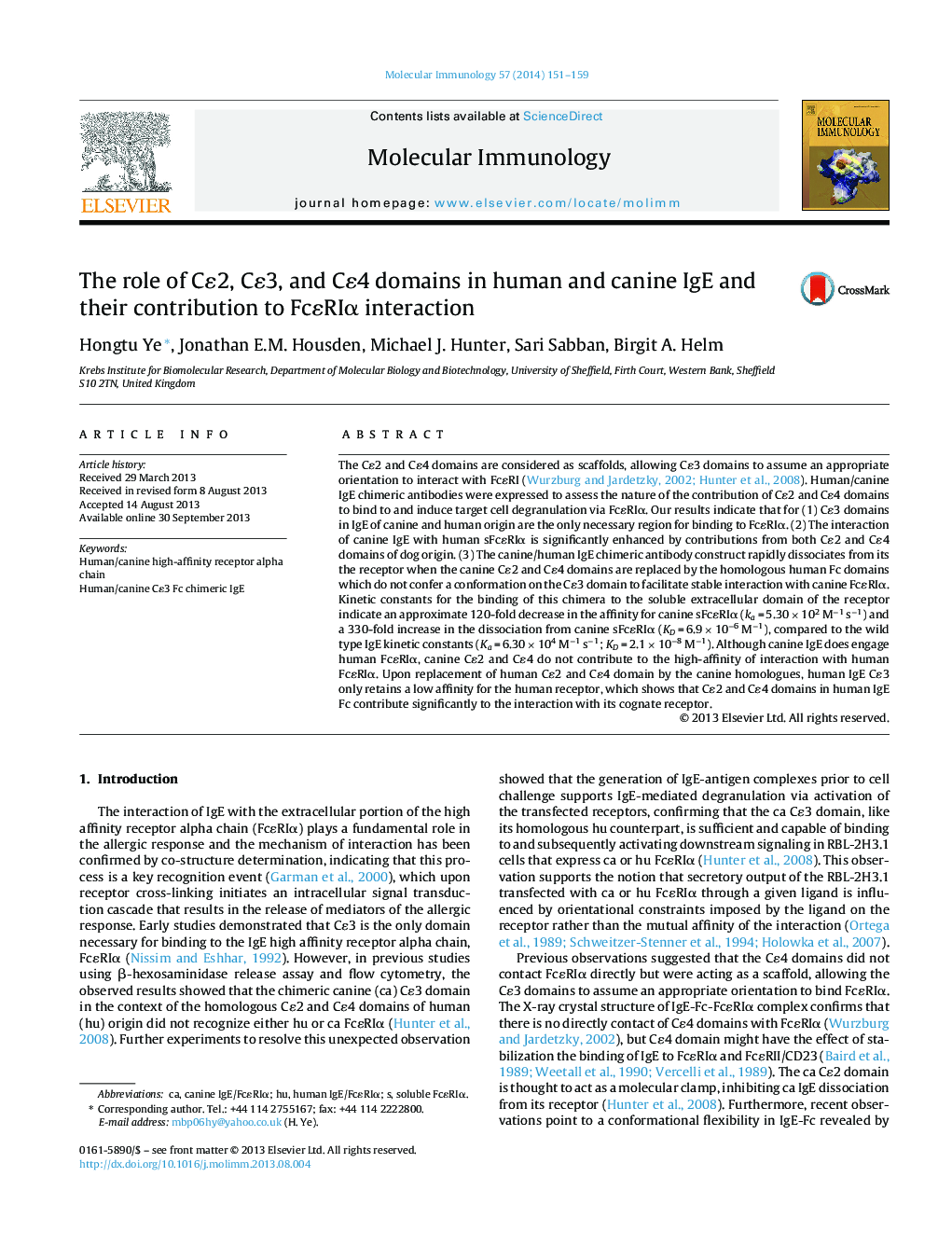| Article ID | Journal | Published Year | Pages | File Type |
|---|---|---|---|---|
| 5917028 | Molecular Immunology | 2014 | 9 Pages |
â¢We expressed the extracellular domains of hu/ca FcÉRIα in Pichia pastoris.â¢The binding of chimeric IgE to hu/ca FcÉRIα was assessed by β-hexosaminidase release.â¢The kinetic analysis revealed the interaction of two chimeric IgE with hu/ca FcÉRIα.
The CÉ2 and CÉ4 domains are considered as scaffolds, allowing CÉ3 domains to assume an appropriate orientation to interact with FcÉRI (Wurzburg and Jardetzky, 2002; Hunter et al., 2008). Human/canine IgE chimeric antibodies were expressed to assess the nature of the contribution of CÉ2 and CÉ4 domains to bind to and induce target cell degranulation via FcÉRIα. Our results indicate that for (1) CÉ3 domains in IgE of canine and human origin are the only necessary region for binding to FcÉRIα. (2) The interaction of canine IgE with human sFcÉRIα is significantly enhanced by contributions from both CÉ2 and CÉ4 domains of dog origin. (3) The canine/human IgE chimeric antibody construct rapidly dissociates from its the receptor when the canine CÉ2 and CÉ4 domains are replaced by the homologous human Fc domains which do not confer a conformation on the CÉ3 domain to facilitate stable interaction with canine FcÉRIα. Kinetic constants for the binding of this chimera to the soluble extracellular domain of the receptor indicate an approximate 120-fold decrease in the affinity for canine sFcÉRIα (ka = 5.30 Ã 102 Mâ1 sâ1) and a 330-fold increase in the dissociation from canine sFcÉRIα (KD = 6.9 Ã 10â6 Mâ1), compared to the wild type IgE kinetic constants (Ka = 6.30 Ã 104 Mâ1 sâ1; KD = 2.1 Ã 10â8 Mâ1). Although canine IgE does engage human FcÉRIα, canine CÉ2 and CÉ4 do not contribute to the high-affinity of interaction with human FcÉRIα. Upon replacement of human CÉ2 and CÉ4 domain by the canine homologues, human IgE CÉ3 only retains a low affinity for the human receptor, which shows that CÉ2 and CÉ4 domains in human IgE Fc contribute significantly to the interaction with its cognate receptor.
